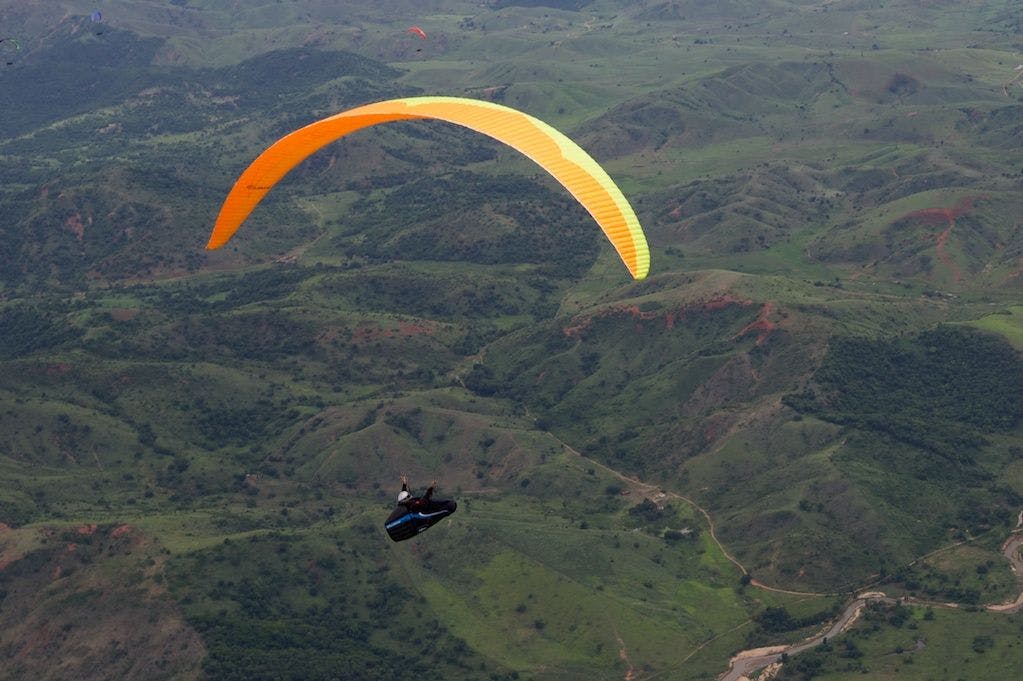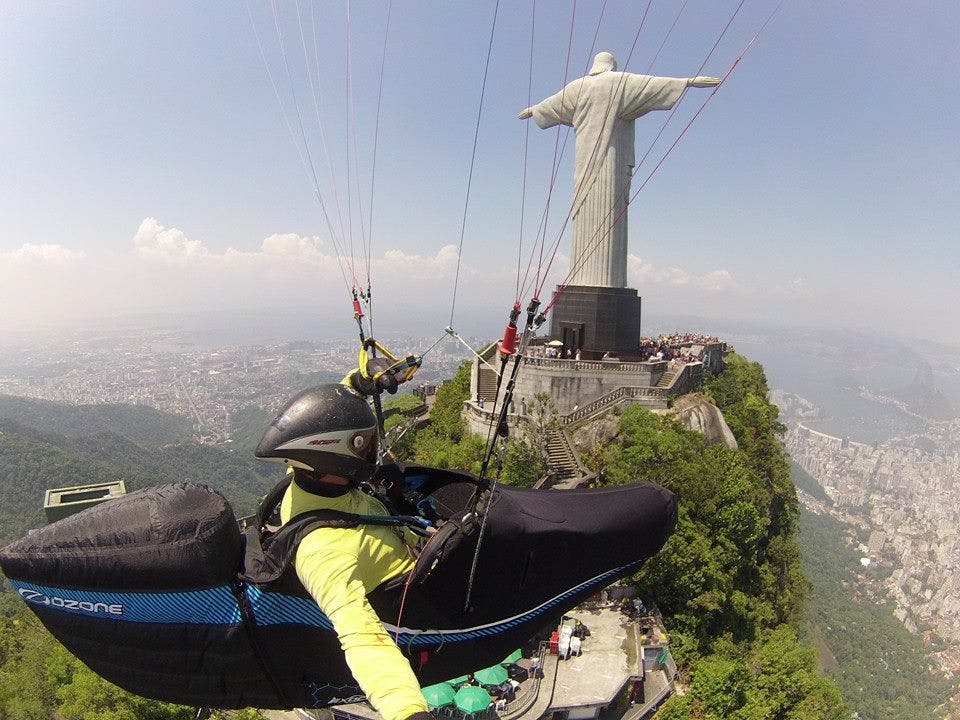Paragliders



A low-drag high-performance harness for serious XC or Competition flying
Product Info
The Exoceat is a low-drag, high-performance harness for serious XC or Competition flying. It is the result of a multi-year development process which included extensive testing, wind-tunnel research, and a prolonged beta phase involving the world’s top competition pilots. This new harness is a unique design that we think is the perfect complement to our highest performing wings. With a technically advanced foot-support system, a never-before seen style of bombay-reserve deployment system, and super-low-drag fairing that was developed from real aerodynamic research, the Exoceat is truly a next-generation design.
*New for 2015: The Exoceat has been updated with a more comfortable chest strap location, increased storage area, new cockpit storage pockets, and a new strap for cockpits with ballast.
Click here to watch a brief video covering the assembly and components of the harness systems.
HISTORY
Development of the Exoceat was initiated in 2011, when Fred Pieri began testing various faring designs at the ISAE school in Toulouse, France. Creating a harness design centered around the reduction of drag was a primary concern, thus the OZONE R&D Team structured the rest of the Exoceat around an optimized flight position, faring, and harness frame. Our mission was to create the BBHPP of harnesses, upsetting current traditional harness design and construction. We believe the Exoceat is a major step forward in paraglider harness technology.
HIGH-TECH AIR INTAKE
The Exoceat features a special air inlet which is result of two important requirements: first, it must be smooth and low drag, and second, it must provide maximum pressure to the faring regardless of its position in the air during harness movement (yaw, pitch, or thermalling positions).
DRAG REDUCTION
As with paraglider design, we focused on the reduction of wrinkles, creases, and deformation throughout the harness. The Exoceat’s inflatable nose cone, rear faring, and main surfaces are all very smooth. Closed cell foam provides a light but rigid shell encompassing the pilot and encasing the double reserve container. From “leading edge” to “trailing edge”, the Exoceat is remarkably smooth and low-drag, making it the most efficient harness that we have ever flown.
PILOT EFFICIENCY
In addition to drag efficiency, the Exoceat is also designed for pilot comfort and stability. The bucket seat design creates a highly consistent loading of the frame, with no pressure points or compression zones on the pilot, even in highly-loaded situations such as spiral dives. The seat design is fully supported from your upper upper back to the bottom of your feet, with a specially designed stirrup system that creates the sensation of resting your legs “on” something, instead of “pushing” against a bar. This “footrest” sensation, coupled with the rigidity and support of the bucket seat, means that there is no compression against your shoulder straps and you can easily relax against the back of the harness – saving energy and increasing pilot efficiency.
HANDLING
The Exoceat features many adjustments, allowing the pilot to tailor the “handling” of the harness to their taste. The roll stability is fully adjustable, meaning that you can change the setting to increase roll authority, or increase stability, according to your needs.
RESERVE COMPARTMENT AND SAFETY FEATURES
The Exoceat’s ambidextrous double-bombay reserve design was created to provide a fast opening of a very large area. Reserve parachutes can be deployed using either hand, in low or high-G situations, with an absolute minimum of resistance. When closed during normal flight, the reserve system is very low-drag. Reserve deployment is a very real scenario in high level competition and XC flying, and providing for the widest range of imaginable reserve deployment situations was integral to the Exoceat’s development and design.
The Exoceat features a back bumper system, which is generously padded along the entire length of the back, and also under the seat of the harness.
The Exoceat is EN and LTF certified, and meets or exceeds CIVL Section 7 harness requirements.
COCKPIT, BALLAST, AND FOOT-PLATE
When developing the cockpit, we engineered the positioning of the deck to be oriented 90 degrees to the pilot’s line of sight. This is important for reading modern instruments easily in bright sunlight, as it ensures the minimum amount of glare and reflection.
The ballast pocket is ideally located to not disturb the center of gravity, and is removable.
Although the Exoceat is not a light harness, we opted for an ultralight footplate to increase comfort during take-off and landing, when a heavier swinging pod-end can be uncomfortable.
Specifications
| Sizes | XS | S* | M | L* |
|---|---|---|---|---|
| Pilot Height (cms) | 160-170 | 170-180 | 175-190 | 180-200 |
| Harness Weight (includes: Carabiners, dummy rescue, cockpit, back bumper). | 9.3 kg | 9.4 kg | 9.5 kg | 9.7 kg |
| Removable ballast container weight | 280 g | 280 g | 280 g | 280 g |
| Max Load | 125 kg | 125 kg | 125 kg | 125 kg |
| Sizes |
|---|
| Pilot Height (cms) |
| Harness Weight (includes: Carabiners, dummy rescue, cockpit, back bumper). |
| Removable ballast container weight |
| Max Load |
| XS | S* | M | L* |
|---|---|---|---|
| 160-170 | 170-180 | 175-190 | 180-200 |
| 9.3 kg | 9.4 kg | 9.5 kg | 9.7 kg |
| 280 g | 280 g | 280 g | 280 g |
| 125 kg | 125 kg | 125 kg | 125 kg |
*S and L sizes are changed by a shorter or longer pod size. The harness structure remains the same for S, M, L. The XS Size is a smaller harness structure.
* Wing weight may vary up to 50g per size due to slight variations in the manufacturing of the fabric used.
The Exoceatis delivered with the following:
- Mousse-bag (back foam)
- Foot plate
- Seat plate
- Cockpit
- Carabiners
- Speed system
- Dummy rescue
- 2 rescue handles
- Rescue pin
- Plastic rod for rescue container
Optional:
- Ballast container
- Rescue
- Rescue carabiner
- Rescue bridle






